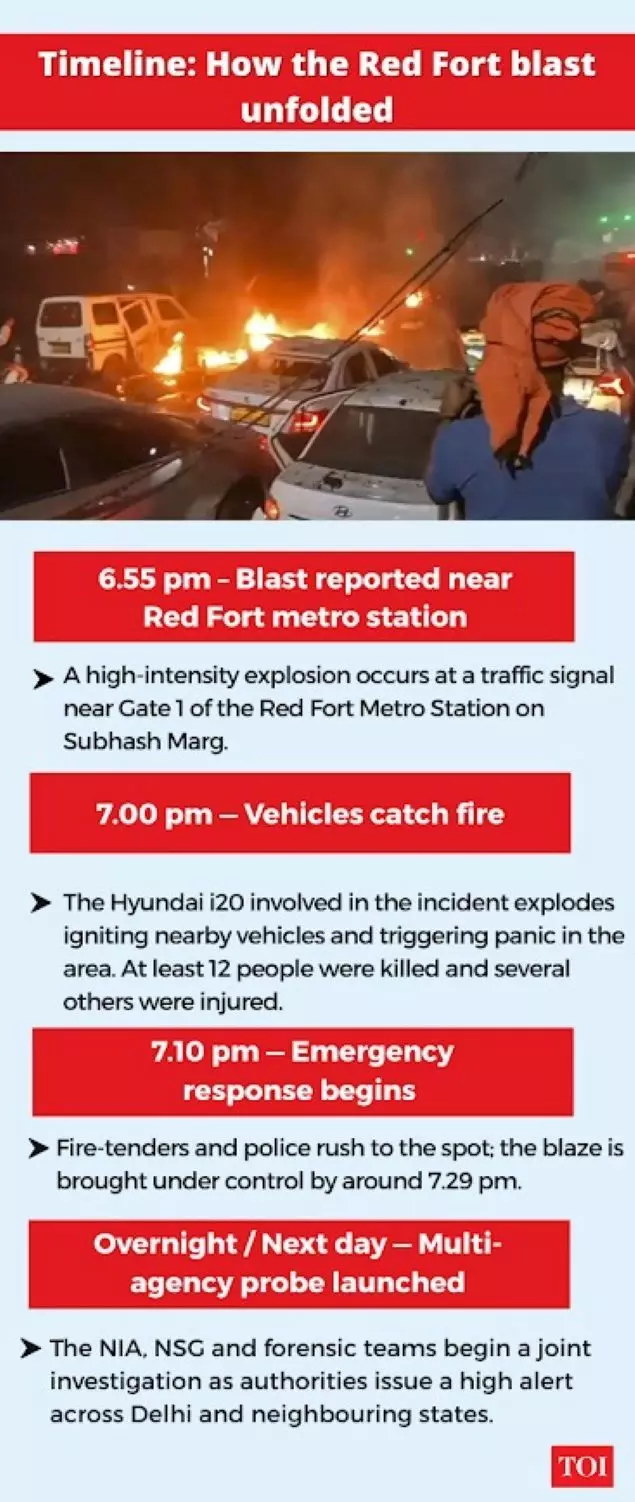
NEW DELHI: Thirty-eight-year-old Sakir, a cab driver from Touru village in Haryana’s Nuh, considers himself lucky as he looks around the ICU of Lok Nayak Hospital. Having sustained burn injuries to his head and forehead, he says his condition is far better than many others being treated alongside him.“Doctors, who make the rounds every 15 minutes, are treating me and the other patients well. One senior doctor told me a few hours ago that I could be discharged soon,” he tells TOI from his hospital bed on Tuesday.
A father of three and the eldest in his family, Sakir was returning home after dropping a passenger at New Delhi railway station. His cab, a Maruti Ertiga, was just three vehicles ahead of the i20 car that was used to trigger the explosion.

“Traffic was crawling at that time, and all my windows were rolled up. Then, it happened in a fraction of a second. I heard a very loud bang. My car shook and I felt as if it had been lifted and dropped like a toy. The windows, mirrors and windscreen shattered and the airbag blew and hit me in the face,” Sakir says. He saw bright flames all around him and people trying to flee. “For a few moments, my mind was numb. Then I tried to gather my senses. I unlocked the seatbelt and tried to push open the door, but it was stuck,” he says. By then, the CNG kit in his cab had caught fire. “The flames burnt my hair, eyebrows and skin. I jumped out of the cab through a window. Soon, police took me to hospital,” he says over the phone, one that he had used to inform his family of his whereabouts after reaching LNJP. “I feel lucky. There are patients in much worse condition. Some seem to have lost their hearing after their eardrums ruptured due to the impact of the blast,” Sakir says. Inside the ICU, he is one of nearly 15–20 patients under constant medical supervision. Doctors say most of them suffered burns, blast injuries or shock-related trauma, with a few requiring critical intervention. His younger brother Taufik, waiting outside since Monday night, was finally allowed to have a brief glimpse of him. “We are thankful to everyone — the doctors, nurses and police,” Sakir says. His story is one among several tales of survival and resilience emerging from the hospital, where a dedicated team of medics are tirelessly tending to the injured.





